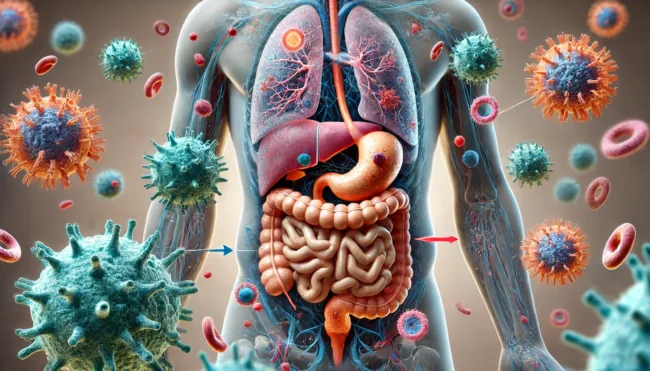The silent killer after transplant: What you need to know about graft-versus-host disease
Understanding Graft-Versus-Host Disease (GVHD)
Graft-versus-host disease (GVHD) is a severe complication that can occur after an allogeneic stem cell or bone marrow transplant. This condition arises when the immune cells from the donor (the graft) recognize the recipient’s body (the host) as foreign and initiate an attack on various tissues. The development of graft-versus-host disease involves complex interactions between immune cells, cytokines, and tissue antigens, leading to inflammation and tissue damage. Graft-versus-host disease is broadly classified into two types: acute and chronic, each with distinct clinical presentations and timelines.
Types of Graft-Versus-Host Disease
Acute graft-versus-host disease typically presents within the first 100 days following transplantation and primarily affects the skin, liver, and gastrointestinal tract. The severity of acute graft-versus-host disease is graded based on the extent of organ involvement, with symptoms ranging from a mild skin rash to severe jaundice and diarrhea. Chronic graft-versus-host disease, which develops later, can affect almost any organ in the body and often presents with symptoms similar to autoimmune disorders, such as scleroderma, dry eyes, and lung fibrosis.
Risk Factors and Prevention
The risk of developing graft-versus-host disease is influenced by several factors. One of the most significant is the HLA mismatch between the donor and recipient, with a closer match reducing the risk of graft-versus-host disease. Other factors include the recipient’s age, with older recipients at higher risk, the gender combination between donor and recipient, and the intensity of the conditioning regimen before the transplant.
Preventing graft-versus-host disease involves several strategies, including immunosuppression to dampen the immune response of the donor cells. Common prophylactic treatments include calcineurin inhibitors such as cyclosporine or tacrolimus, methotrexate, and post-transplant cyclophosphamide. HLA matching and selecting donors with favorable immunological profiles are also critical in reducing the risk of graft-versus-host disease.
Symptoms and Diagnosis
The symptoms of graft-versus-host disease vary depending on whether the condition is acute or chronic. Acute graft-versus-host disease often manifests with a skin rash, liver dysfunction (indicated by elevated bilirubin levels), and gastrointestinal symptoms like nausea, vomiting, and diarrhea. In contrast, chronic graft-versus-host disease can lead to more systemic symptoms, including skin tightening, joint stiffness, dry eyes, and lung complications such as bronchiolitis obliterans.
Diagnosing graft-versus-host disease requires a combination of clinical evaluation and biopsy of affected tissues. Laboratory tests, including liver function tests and complete blood counts, are essential in diagnosing and monitoring graft-versus-host disease. The emerging role of biomarkers in the diagnosis of graft-versus-host disease is a promising area of research, with biomarkers such as amphiregulin being studied for their potential to refine risk assessment and guide treatment.
Treatment and Management
The treatment of graft-versus-host disease depends on its type and severity. Acute graft-versus-host disease is typically treated with high-dose corticosteroids as the first-line therapy. However, up to 50% of patients with graft-versus-host disease do not respond to steroids, necessitating alternative treatments. Recent advances include the use of JAK inhibitors like ruxolitinib, which have shown promise in treating steroid-refractory acute graft-versus-host disease. Other treatment options for graft-versus-host disease include extracorporeal photopheresis and monoclonal antibodies targeting specific immune pathways.
Managing chronic graft-versus-host disease is more complex due to its multi-organ involvement and autoimmune-like features. Treatment for chronic graft-versus-host disease often involves prolonged immunosuppression, and patients may require physical therapy, ophthalmic treatments for dry eyes, and other supportive therapies to manage symptoms and improve quality of life.
Outcomes and Prognosis
The prognosis for patients with graft-versus-host disease varies widely based on factors such as disease severity, overall patient health, and treatment response. Acute graft-versus-host disease can be life-threatening if not adequately controlled, while chronic graft-versus-host disease is associated with long-term morbidity, including an increased risk of developing secondary cancers and chronic organ damage. Advances in the treatment of graft-versus-host disease, particularly in the development of targeted therapies and better prophylaxis, have improved survival rates. However, chronic graft-versus-host disease remains a significant challenge, impacting the quality of life and long-term health outcomes of survivors.
Long-term Complications of Graft-Versus-Host Disease
Graft-versus-host disease can lead to several long-term complications, especially in cases of chronic graft-versus-host disease. These complications include pulmonary fibrosis, chronic liver disease, and an increased risk of secondary infections due to prolonged immunosuppression. Additionally, there is a higher incidence of secondary cancers in patients who have experienced chronic graft-versus-host disease, necessitating ongoing monitoring and preventive care.
Summing it up
Graft-versus-host disease is a complex and challenging complication of allogeneic transplants, requiring a nuanced understanding of its risk factors, symptoms, and treatment options. Early diagnosis and tailored therapies are crucial for effectively managing graft-versus-host disease. Ongoing research into biomarkers and novel treatments offers hope for better outcomes in the future.
Discover more from Business-News-Today.com
Subscribe to get the latest posts sent to your email.
